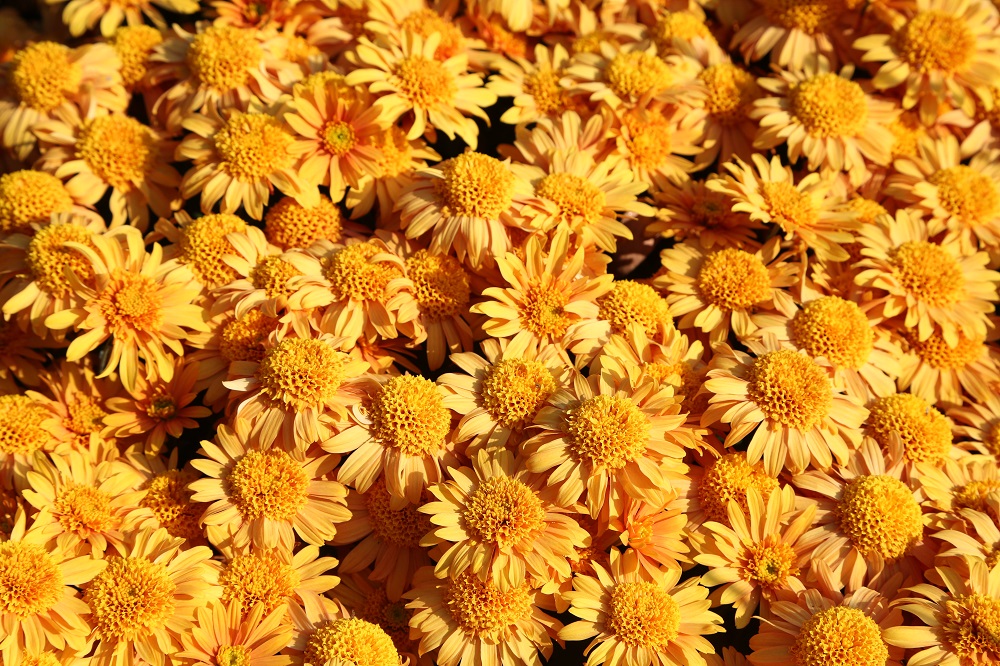The major flower festival of the autumn Crimea – the Ball of Chrysanthemums, which displays over 50 thousand bushes of all shapes and colors, opened at the Nikitsky Botanic Garden (NBG) in the last days of October. However, this holiday is not a one-day one – the flowers’ dance - to the delight of the guests - will last until December 5, adding colors and new participants every day - after all, many chrysanthemums did not have time to come out because of the abnormally hot October. And the peak of flowering, according to the NBG experts, will be in mid-November.
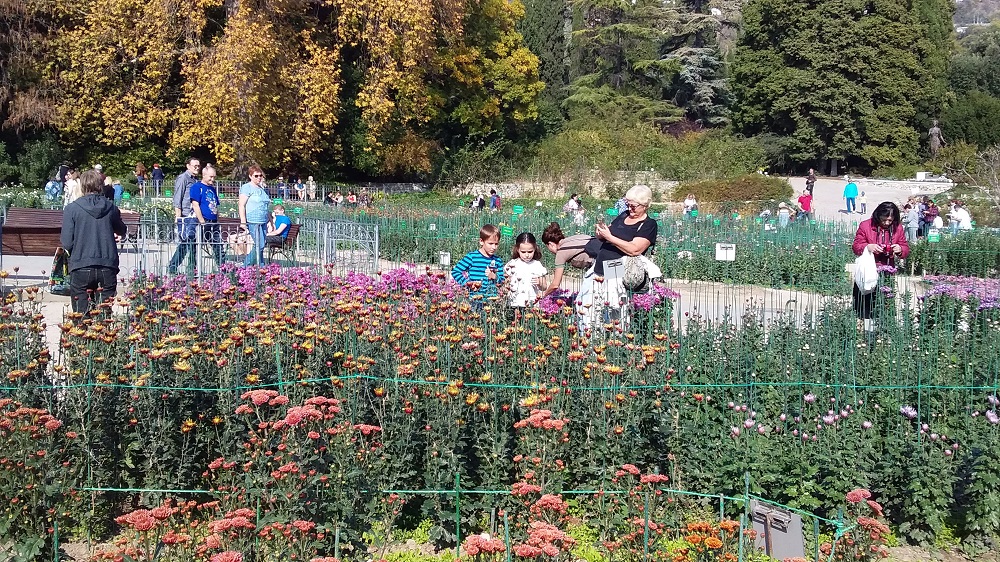
“We are true to our traditions and opened the Ball of Chrysanthemums 66 times in a row. This year, the exhibition presents a record number of different varieties. We collect new plant samples around the world and bring them to the Nikitsky Botanic Garden. Our selectionists work on them to create new varieties of chrysanthemums so that visitors could admire them,” Yuri Plugatar, Corresponding Member of the Russian Academy of Sciences, said to EcoTourism Expert.
In the center of the exposition, there is an eight-petal flower, in which large-flowered varieties are planted followed by small-flowered varieties along the perimeter, they are the first to blossom out. The visitors to the ‘Ball of Chrysanthemums-2019’ will see 472 varieties and hybrids of the flowers, while in 2018, 333 varieties ‘only’ and the hybrids were shown at the exhibition. 131 chrysanthemums this year made their debut, and only 37 of them are new invasive flowers introduced (these are plants relocated to a place where they did not exist before). The remaining 94 are the hybrid forms selected by the Nikitsky Garden, so domestic new varieties make three times more than foreign ones. Actually, in the entire NBG’s unique collection, the largest in Russia, now there are much more our own varieties than those brought from abroad.
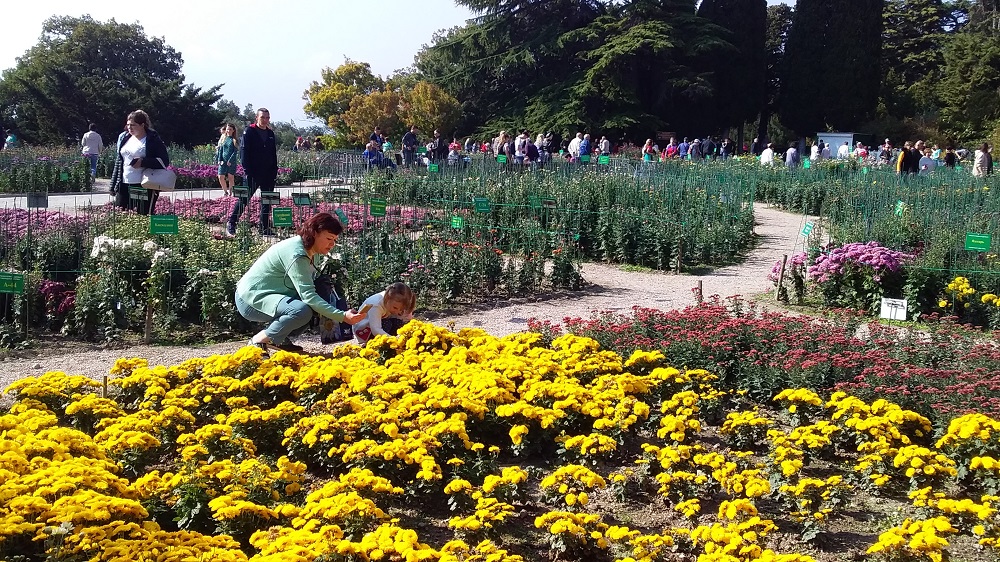
According to Natalya Smykova, the curator of the unit of chrysanthemums in the NBG sector growing the flowers, the introduction of a new variety takes 3 to 4 years from its identification to its official registration. For example, since 2014, only three varieties have been registered: Egyptian, Petal Rain and Rendezvous. This year, the official status should be given to the Hermitage and the chrysanthemum named after the beloved Soviet and Russian actor Vasily Lanovoy. “At present, work is underway on 15 more varieties: last year, we were lucky to grow only few new chrysanthemums,” she said.
According to Yuri Plugatar, the chrysanthemums first appeared in Russia at the Nikitsky Botanic Garden in 1812, and from here, they spread outside the Crimea and throughout the country. The first varieties were brought from China and Japan, and they began doing the selection of chrysanthemums at the NBG exactly 80 years ago, in 1939. The champion was Ivan Alexandrovich Zabelin, who had worked at the Garden for forty years and headed the floriculture department for a long time. He was the author of more than a dozen varieties and more than a hundred promising forms of the garden chrysanthemums. In the years that followed, this work was successfully continued by other selectionists who managed to create numerous highly decorative varieties and forms adapted for the outdoor growing. Copyright certificates are issued for some promising varieties.
In addition to admiring the flowers, the visitors have two more important missions. They will choose the ‘Queen of the Ball’ by voting for the most attractive flower - they only need to drop their card with its name into a special box. “The queen of chrysanthemums has been chosen since 2007, in different years, the foreign varieties occupied the throne: Anastasia, Ami-Paulette, Yan-Zi, Reflex, Escort Rot, Orange Ball, Natasha, Kiko, Milka Pink. However, the queens of the last three years - Egyptian, Swallow’s Nest, Let There Always Be Sunshine - are the result of the selection efforts by the Nikitsky Garden, and, by the way, unlike the previous favorites – the large-flowered chrysanthemums - these are small-flowered ones. Only they can create a continuous field of flowers for several months,” Natalya Smykova said.
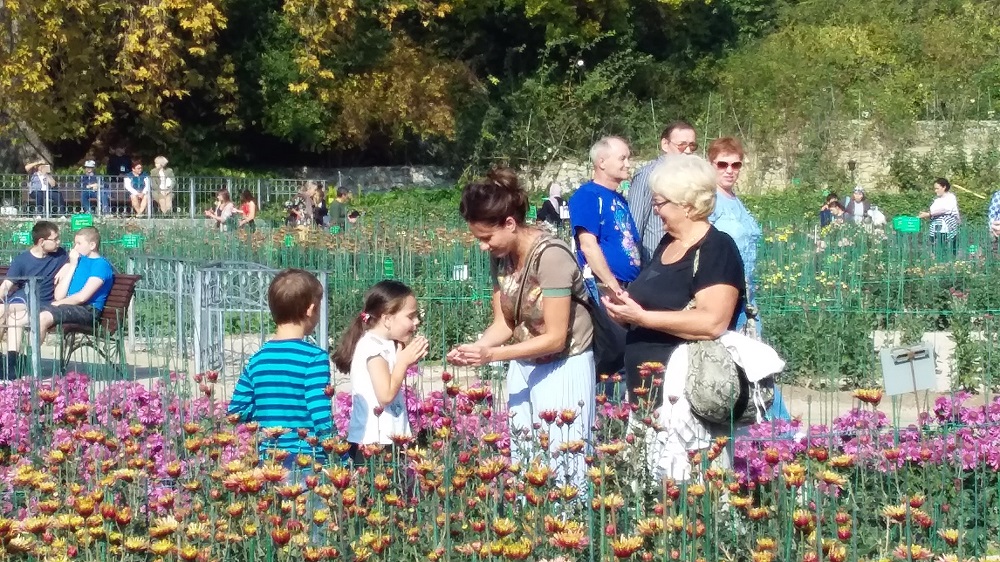
In addition, visitors can come up with names for the new varieties of the flowers of local selection. The employees of the Botanic Garden promise to choose the best and name the chrysanthemums. This is not an easy task - after all, over the entire history of the NBG, more than 1,500 varieties and hybrids have been produced here, and few people manage to offer something original.
However, one new beautiful name for the magnificent lilac small-flowered chrysanthemum, obtained by the experienced selectionist Zoya Andryushenko, already exists. ‘Crystal Emma’ owes its poetic name to the blogger Maria Rudenko, who told in her blog that she met an elderly man in the alleys of the Garden by chance. He showed her a photo of a pretty woman who liked chrysanthemums better than other flowers, and told Maria about his wife, a military pilot. “This is my Emma. My slim ‘crystal’ ChrysanthEmma, I called her that and always gave her these flowers. Unfortunately, she is no more. Now, every year in autumn I wander alone about the Garden among this rave of colour and round dances of flowers and hope that she will see all this with me.” Having learned about this touching story, the NBG selectionists unanimously decided - from now on, Emma will forever bloom in their Garden.
China is considered to be the birthplace of chrysanthemums, where the Chinese people began to grow them as cultivated plants 2,500 years ago; however, the chrysanthemums were used mostly in cooking and medicine than as decorative flowers. By the way, Karl Linney, while working on the classification of plants, took the Chinese name ‘flower-sun’ as the basic one. He combined these two words into one (‘chrysos’ - golden; ‘antenna’ - a flower) and gave a generic name - chrysanthemum.
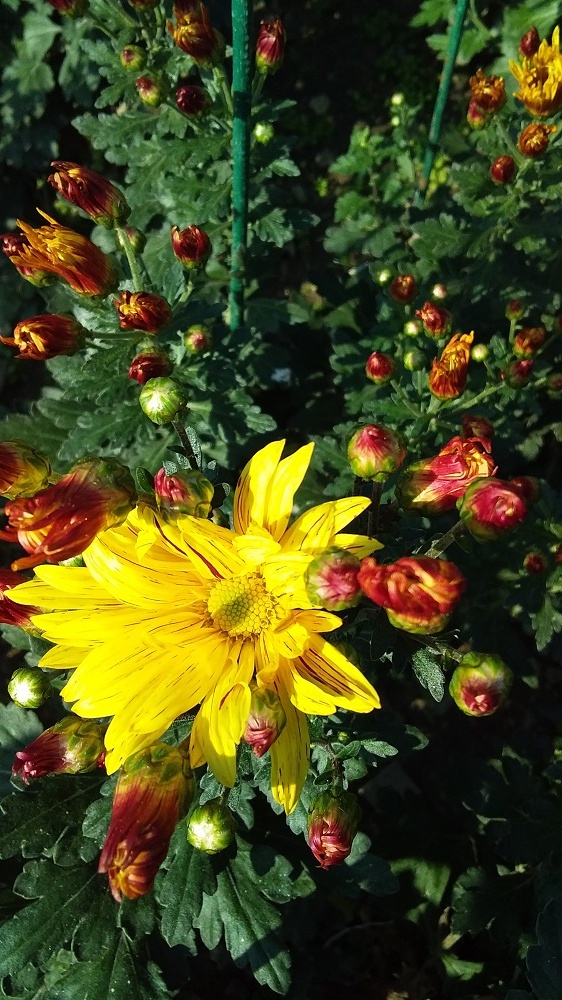
Chrysanthemum is used as a medicinal herb: its leaves are prescribed for migraines, and flowers are used to improve the appetite. Also, in many countries, chrysanthemum flowers and leaves are used for the treatment of eye diseases, malaria and alcohol dependence, and for the prevention of cardiovascular diseases. Chrysanthemum is widely used in traditional medicine in the Oriental countries as an anti-inflammatory, sedative, antispasmodic agent. In the academic medicine, preparations with the addition of chrysanthemum help in the treatment of eye diseases and ear disorders, the cardiovascular diseases, they are used for blood thinning and treating rheumatism. The Horticulture for Health claims that the main quality of chrysanthemums is their ability to establish equilibrium.

And in the budget of the Ministry of Agriculture of Japan, there is a special article providing for allocations for edible flower market research. And every autumn, during the season of blooming chrysanthemums in Japan, the Japanese use the flower not only as the decoration for various dishes, but also as a side dish, and it tastes like spinach.

